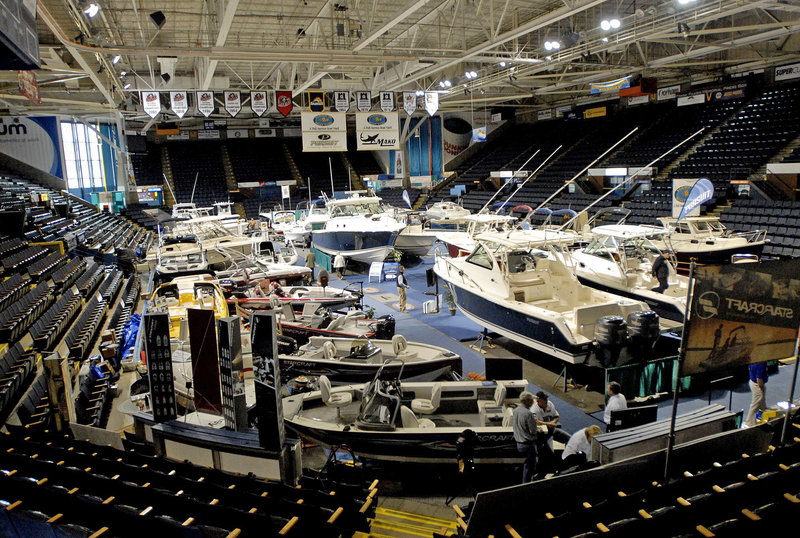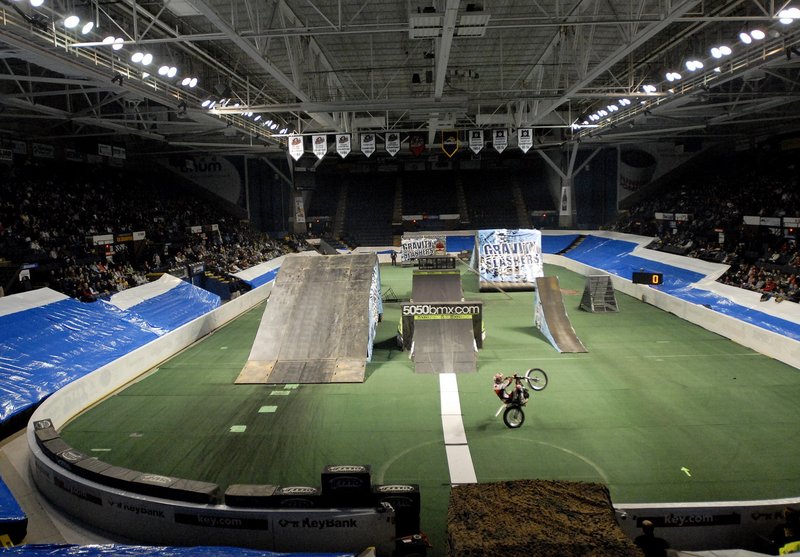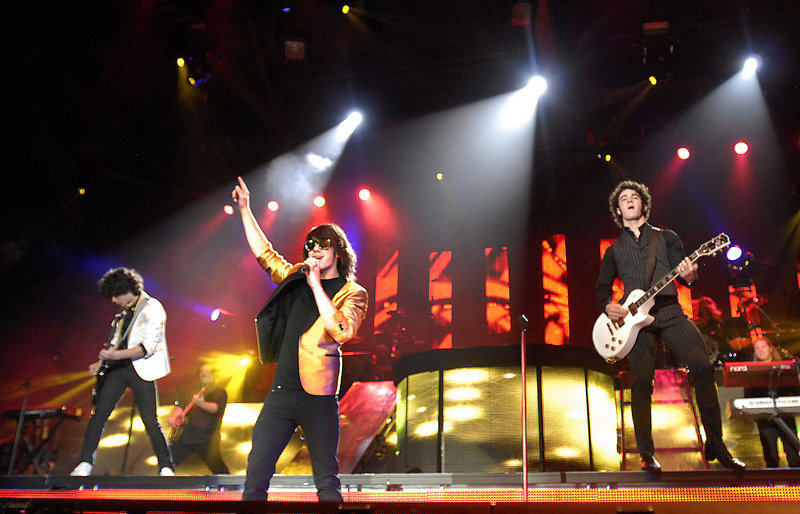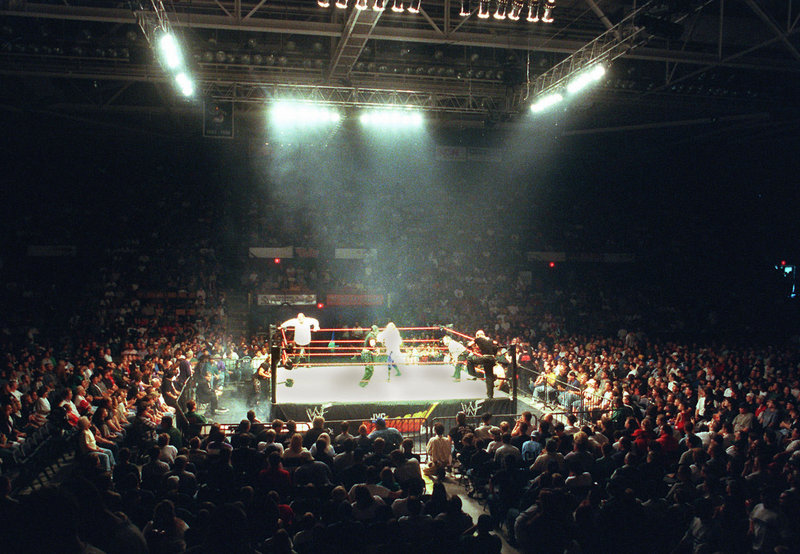Will a shiny new lobby and bigger loading docks bring the likes of Lady Gaga or Madonna to the Cumberland County Civic Center?
Probably not.
Planned renovations to the 35-year-old arena — including improvements to concessions, dressing rooms, loading docks, and possibly more seats — will definitely help make the place more attractive to concert acts and their managers, local music promoters say.
But they probably won’t help lure the sort of top-tier acts that play big-city venues such as TD Garden in Boston, or even newer mid-sized arenas such as the Verizon Wireless Arena in Manchester, N.H.
“I think capacity is the most important thing,” said Mike Flanagin, head of New England Country Music Productions, who books country concerts all over the region. “The civic center in Portland should be at least as big as Manchester, but it’s not.”
The civic center has a maximum concert capacity of about 8,000, depending on seating configurations, compared to about 11,700 for Manchester. Most big-city arenas like TD Garden have 20,000 concert seats or more.
“Unless the civic center doubles or triples its capacity, which is out of the question due to space restraints, we’re not going to get the Van Halens and The Rolling Stones and the Bruce Springsteens,” said Lauren Wayne, general manager of Portland’s State Theatre, who has promoted shows at other venues as well. “I mean, we aren’t Boston or Philly, and we don’t have the population to support the number and scale of shows the major cities get on a routine basis, anyway.”
Steve Crane, general manager of the civic center, says that the idea of adding seats to the building during upcoming renovations is being considered, but the number would likely be in the hundreds, not thousands. Crane agrees that capacity is important, but also agrees with Wayne that even if the civic center had 10,000 seats or more, the market still might not be considered large enough to attract really major acts.
The civic center has not added one seat in 35 years, Crane said, but in 1977 the concert touring business was very different.
Now many big acts tour mostly in the summer, playing the large outdoor venues that didn’t exist in great numbers in the 1970s, such as the Comcast Center in Mansfield, Mass.; Meadowbrook U.S. Cellular Pavilion in Gilford, N.H.; and the Bangor Waterfront Pavilion. And other New England cities such as Manchester and Lowell, Mass., didn’t have civic center-type venues in 1977, but now they do.
Those changes and other shifts in the way the concert business runs have meant a steady decline in concerts for the civic center. In its first one-year period, in 1977 to 1978, the venue presented 30 concerts, including shows by ZZ Top, Orleans, Boston, James Taylor and Jackson Browne.
So far this year, the civic center has three concerts on its upcoming schedule — country star Eric Church, rockers The Black Keys and Taylor. A report from Pollstar magazine shows that the civic center had 20 concerts in 2005, but by 2009, that number had dropped to 11.
Another factor that limits the scope of acts that will play here is the city’s location. Basically, if a tour manager is routing a tour and looks at a map, Portland is not on the way to anywhere.
“Portland is the end of the line. It’s not like cities in the middle of the country that can be added to a tour because they’re on the way to somewhere else,” said Flanagin, who has put on shows at Gillette Stadium in Foxborough, Mass.
LOWERING COSTS COULD HELP
So if the civic center can’t double its size or move to a larger population base, what are the most crucial improvements that can be made to attract major concert acts?
Local promoters — the folks who bring acts to a venue — agree that things that help lower the cost of putting on a show are important.
For instance, the civic center now has one loading dock, and some trucks have to park on the street. A larger loading dock area and larger backstage areas can mean that loading and unloading trucks takes less time, resulting in reduced labor costs.
Also, if trucks can be loaded faster, a tour manager knows he can get his band on to the next show more quickly, and that might help convince him that Portland can be included on the tour route.
“The band management wants affordable labor and low operations costs,” said Alex Gray of Waterfront Concerts, who promotes shows at the outdoor Bangor Waterfront Pavilion, among other venues.
Wayne, the State Theatre manager, agreed, saying it would be “great” if the civic center loading area could handle two trucks at a time instead of one.
Gray said larger dressing rooms and power outlets for tour buses are things that tour managers might look for as well. But Wayne said that if an act really wants to play Portland, they generally will “work around” things like small dressing rooms.
“There will always be factors that make it difficult to attract acts to Portland, period,” Wayne said. “Routing difficulty, logistic costs for tours to get to Maine, and to make enough money at a smaller venue than they normally would play to make it financially worth their while.
“And promoters need to make enough money to make it worth the huge financial risk they take on bringing acts to Maine.”
CIVIC CENTER USES UNION LABOR
Some promoters have complained off the record that the civic center’s concert costs are higher because union stagehands are employed to set up and break down shows. But Crane, the civic center’s manager, says he doesn’t think the added cost — an estimated $2,000 to $3,000 per show — would be a deal-breaker for most acts.
Crane also believes that as the manager of a public building, he has to have stagehands who know what they are doing and are held accountable for the safety of civic center patrons.
“I’m sure in some other places the labor is cheaper — maybe they’re getting paid under the table, they don’t have workman’s comp, things like that,” Crane said. “But these guys are hanging 100,000 pounds (of lights and other equipment) over people’s heads, so it’s our responsibility to get people with total competence. If it costs another $3,000 to get people with that competence, how much is that worth in terms of safety?”
For acts and promoters, the tour process starts with planning a route and then seeing which venues along that route make sense to them, economically and otherwise.
An act’s management may decide they need a certain amount of guaranteed money at each venue, and that amount may be so high that buildings the size of the civic center are excluded right away because there aren’t enough seats to bring in the needed revenue.
“The first thing that happens is, I get a call from the promoter, somebody who buys the talent and takes the financial risk,” Crane said. “The first thing they want to know is if we have that date open. The second thing they want to know is how many seats we have.”
The civic center is not in the concert promoting business itself, for the most part, because of the financial risk involved, Crane said. Crane doesn’t pursue acts; he waits for the acts or their management to contact him.
The civic center basically rents itself out to concert promoters for a fee that varies greatly depending on how big the show is and how much labor is involved. The civic center also gets to keep revenues from food, and sometimes a percentage of money from concert and event souvenirs.
So from the civic center’s perspective, any proposed improvements to concession areas — or that make it easier for fans to move around the building and get to concession areas — are important, because the civic center makes money off concessions.
“We’re landlords,” Crane said. “That’s basically what we are when it comes to concerts.”
Staff Writer Ray Routhier can be contacted at 791-6454 or at:
rrouthier@pressherald.com
Send questions/comments to the editors.








Success. Please wait for the page to reload. If the page does not reload within 5 seconds, please refresh the page.
Enter your email and password to access comments.
Hi, to comment on stories you must . This profile is in addition to your subscription and website login.
Already have a commenting profile? .
Invalid username/password.
Please check your email to confirm and complete your registration.
Only subscribers are eligible to post comments. Please subscribe or login first for digital access. Here’s why.
Use the form below to reset your password. When you've submitted your account email, we will send an email with a reset code.